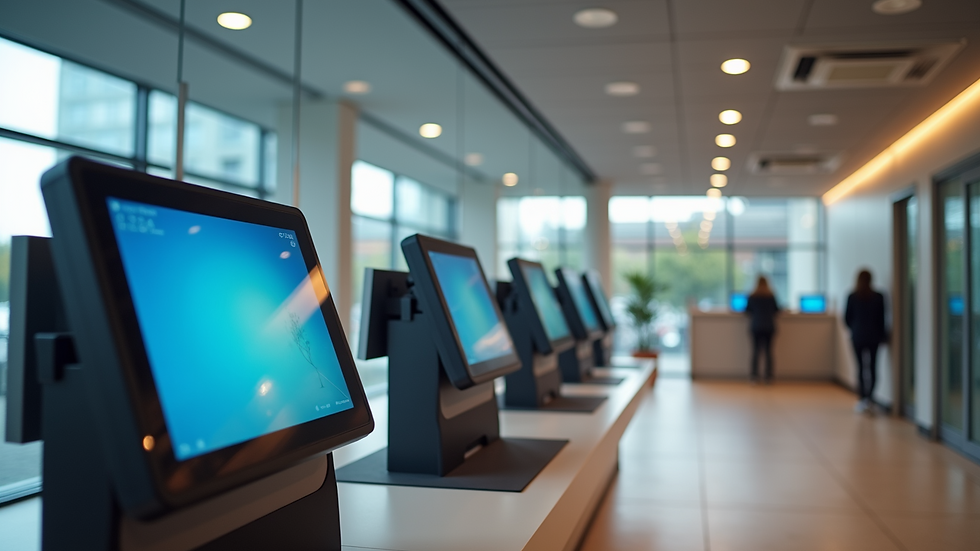12 Essential Tips to Fortify Your Digital Fortress
- Sergiu Marias
- Jun 12
- 3 min read

As your dedicated Cybersecurity Officer, my top priority is to safeguard the integrity and security of our digital environment—whether you're working inside our corporate network or remotely from home. In an era where cyber threats are constantly evolving, cybersecurity is not just an IT responsibility—it's a shared duty. Every one of us plays a vital role in defending our digital assets.
This guide distills the vast world of cybersecurity into 12 practical, high-impact tips. These are the foundational habits that will most effectively strengthen your security posture, both personally and professionally.
Master Your Passwords & Embrace Multi-Factor Authentication (MFA)
Your password is often the only barrier between a cybercriminal and your data. Use unique, strong passwords—minimum 12 characters, including upper/lowercase letters, numbers, and symbols.
Use a password manager like Bitwarden, 1Password, or LastPass.🔐 Always enable MFA where available—it adds an extra layer of protection by requiring a second step to log in (e.g., a code sent to your phone or generated by an app).
Keep Everything Updated: Patching Is Paramount
Unpatched systems are easy targets.
Enable automatic updates for your OS, browsers, apps, and mobile devices.
Regular updates often include critical security patches.
Don’t postpone updates—patching closes the door before attackers get in.
Stay Vigilant Against Phishing & Social Engineering
Phishing, smishing (SMS), and vishing (calls) remain top attack methods.
Watch for:
Misspelled or suspicious sender addresses
Urgent or threatening messages
Unexpected attachments or links
Verify suspicious messages through trusted channels before acting.
Secure Your Home Network
Your router is your digital front door. Lock it.
Change the default admin credentials.
Use WPA2 or WPA3 encryption.
Set up a separate guest network.
Regularly update your router firmware.
Understand the Risks of Public Wi-Fi
Public Wi-Fi is convenient—but dangerous.
Avoid logging into sensitive accounts (banking, work systems).
Use a VPN to encrypt your data if you must connect.
Think Before You Click: Downloads & Attachments
Cyber threats often arrive as trusted-looking files.
Don’t open attachments from unknown senders.
Be cautious with unexpected files from known contacts.
Download software only from official sources.
Use Reputable Antivirus & Anti-Malware Tools
Think of it as your digital immune system.
Install trusted antivirus software on all devices.
Keep it up to date and run regular full scans.
Back Up Your Data – Regularly and Securely
Data loss isn’t just an inconvenience—it’s a business risk.
Use external drives and/or secure cloud backups.
Disconnect backups when not in use.
Test your backups periodically.
Encrypt Your Devices
Encryption protects your data if your device is lost or stolen.
Enable full-disk encryption:
BitLocker (Windows)
FileVault (macOS)
Use biometric locks or strong PINs on mobile devices.
Be Mindful of What You Share Online
Cybercriminals harvest public info to create targeted attacks.
Review your social media privacy settings.
Avoid sharing sensitive info (e.g., full birthdate, address).
Be cautious about connecting with strangers online.
Secure Your Mobile Devices
Your phone holds more data than you think.
Enable screen locks (PIN, fingerprint, Face ID).
Keep the OS and apps updated.
Download apps only from trusted stores.
Review and manage app permissions.
Report Suspicious Activity Immediately
Timely action can prevent serious damage.
At work: Contact your IT or cybersecurity team.
At home: Notify your service provider or relevant institution.
Don’t ignore unusual account behavior or unexpected alerts.
Final Thoughts
Cybersecurity isn’t a destination—it’s a continuous journey. By consistently applying these 12 essential practices, you become an active defender of your own digital world and a valuable part of our collective cyber defense.
Stay alert. Stay informed. Stay secure.




Comments